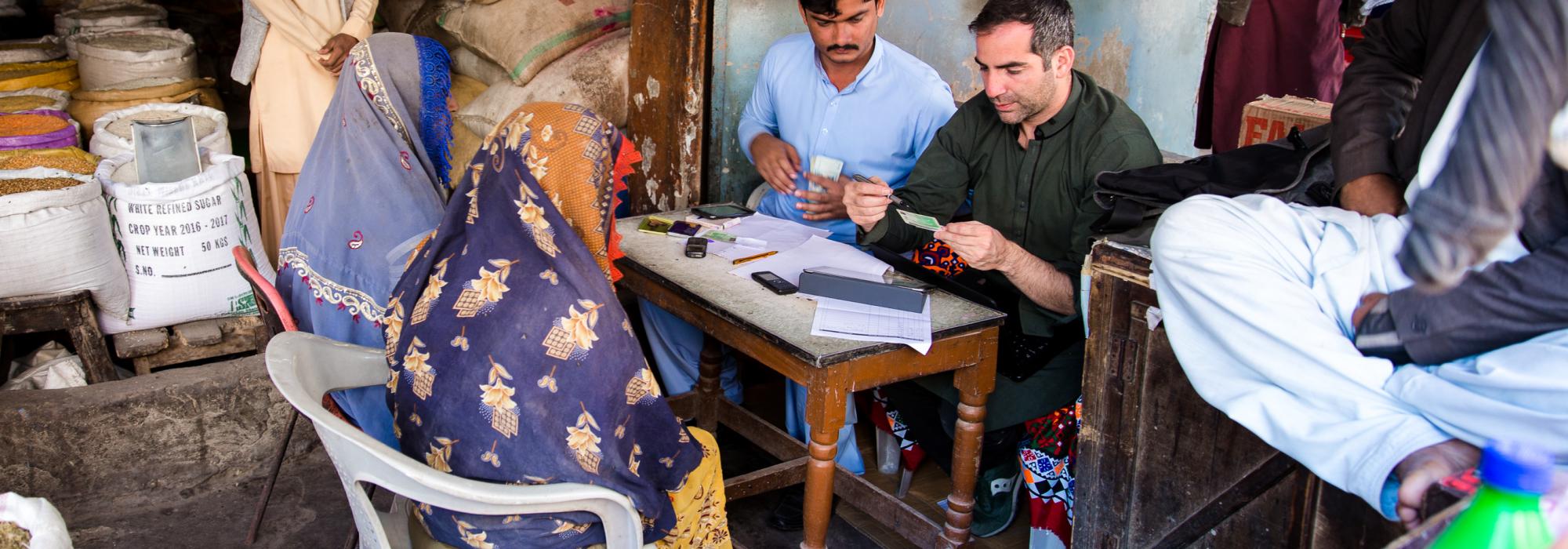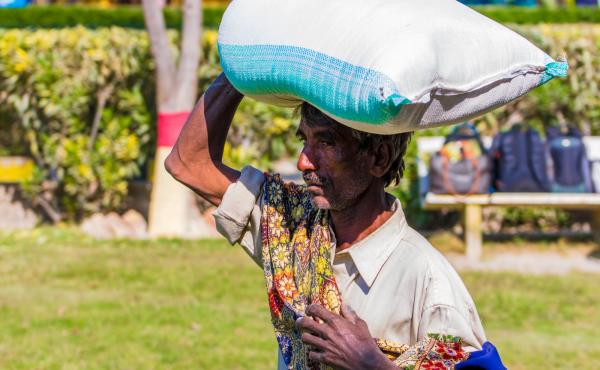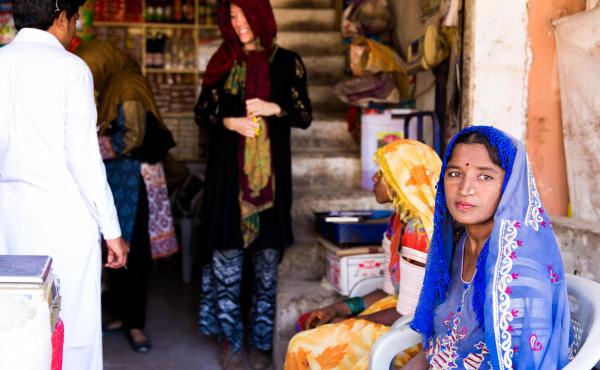In recent years, WFP has dramatically shifted its focus to cash-based transfers (CBT). While only 5 percent of its entire assistance was comprised of CBT in 2011, this increased to more than 25 percent last year. With the number expected to grow significantly in the coming years, WFP’s Innovation Accelerator is exploring innovations, including fin-tech, that reduce CBT costs and risks, while improving beneficiary data protection and implementation speeds.
In early 2017, WFP took the first steps of harnessing a bold technology that can transform the fight against hunger. Blockchain technology, most famously associated with the crypto-currency Bitcoin, offers unique opportunities for humanitarians to enhance our ability to provide effective, efficient assistance to the people we serve – and save millions of dollars.
Put simply, blockchain is a cutting-edge way to structure and organize data. The blockchain is a type of distributed digital ledger hosted across a network of multiple participants. As a ‘trustless’ structure (meaning no party on the network needs to trust each other), it provides a way to share information and transfer digital assets in a fast, tracked and secure way.
By storing data in blocks which are immutable and secure, and with multiple actors holding copies, the risk of fraud, theft or manipulation is reduced to near zero. Furthermore, its peer-to-peer nature removes the need for third party verification from costly intermediaries such as banks or other institutions.
Through cost savings, the traceability of information flows, and by reducing transaction times, WFP can deliver more effective, efficient interventions.

In January 2017, WFP took the ambitious step of piloting an early stage blockchain project, named ‘Building Blocks’, at field level. Deep in the heart of Sindh province, Pakistan, WFP tested core assumptions and the ability of blockchains to authenticate, record, and reconcile cash and food assistance transactions.
As beneficiaries received in-kind food assistance, and a WFP-cash transfer in addition, coded transactions were inputted into the system by the vendor and authenticated and recorded on a public blockchain through a smartphone interface while they waited. Transaction reports generated from the system were used to reconcile the disbursements and ensure trust between the parties.
Adopting key learnings, and having confirmed the technical feasibility and usability of a basic blockchain system, WFP’s ‘Building Blocks’ project is building a robust blockchains engine to support multiple facets of CBT, with transaction reconciliation as a first step. The expanded pilot using this system is expected in the spring of 2017.

Despite being a relatively young technology, blockchain promises to reduce overheads, increase security for aid providers and beneficiaries, and ultimately ensure more funds are redirected to end hunger. As a foundational technology akin to the internet, blockchain has the potential to improve many strands of humanitarian operation. Use cases aren’t merely restricted to the current pilot and cash based transfers; WFP is actively working to establish a broader blockchain architecture that powers the future of identity management and supply chain operations.
Together with the digital shift, blockchain can facilitate faster intervention in some of the world’s most difficult operating environments. For vulnerable countries lacking financial infrastructure, blockchain could help humanitarian actors roll out life-saving cash assistance in matter of days should disaster strike.


The blockchain opens the door for a future where the humanitarian community comes together around a neutral and interoperable infrastructure to harmonize and optimize the global aid effort, especially as the industry up scales cash programmes.
WFP's Innovation Accelerator invites enhanced cooperation and conversation between all those looking to harness the undoubted potential of blockchain for humanitarian purposes. For more information, please contact: global.innovation@wfp.org
Want to know more about blockchain technology? Click here to watch a video produced by the Institute for the Future (IFTF).
Written by: Alex Alden & Houman Haddad
Photos by: WFP/Farman Ali


